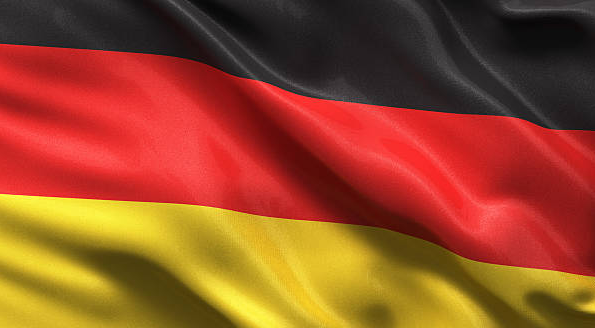When it comes to national symbols, few are as iconic and meaningful as a country’s flag. In this article, we will delve into the rich history and symbolism behind the Czech Republic national flag. From its inception to the present day, the flag has played a significant role in the country’s identity and history.
The Birth of a Nation
The Velvet Revolution and the Velvet Divorce
The story of the Czech Republic’s national flag begins with the events of 1989 known as the Velvet Revolution. This peaceful uprising marked the end of communist rule in Czechoslovakia and paved the way for the country’s eventual split into two independent nations: the Czech Republic and Slovakia, a process known as the Velvet Divorce.
Adoption of the Flag
In the wake of the Velvet Divorce, the Czech Republic adopted its own national symbols, including the national flag. On March 13, 1920, the flag was officially established, but its design dates back to even earlier times.
Czech Republic National Flag: Design and Colors
A Tricolor Tribute
The Czech national flag consists of two horizontal bands of white (top) and red (bottom) with a blue triangle extending from the hoist side. This design is known as a tricolor, and each color carries significant symbolism.
- White: White represents peace and honesty, values that are deeply ingrained in Czech culture and history.
- Red: Red symbolizes courage and valor, traits that have been displayed by the Czech people throughout their history.
- Blue Triangle: The blue triangle is a symbol of vigilance, truth, and loyalty, qualities that the Czech Republic holds dear.
Historical Significance of Czech Republic National Flag
A Tale of Resilience
The Czech Republic’s flag has a remarkable history of resilience. It has weathered numerous storms throughout the nation’s history, including periods of foreign domination and occupation. One particularly challenging era was during the Habsburg Empire’s rule when the flag symbolized Czech national identity amidst cultural suppression.
The Flag During World War II
During World War II, when Czechoslovakia was occupied by Nazi Germany, the national flag faced a ban as part of the occupation’s oppressive measures. However, the flag’s symbolism was so deeply ingrained in the hearts of the Czech people that they refused to let it disappear. Despite the Nazi ban, Czech resistance groups clandestinely flew the national flag as a symbol of their unwavering resistance against foreign occupation. This clandestine act not only demonstrated the resilience of the Czech spirit but also served as a beacon of hope for those oppressed under Nazi rule.
Czech Republic National Flag: Modern Usage
National Holidays and Celebrations
In the modern era, the Czech Republic’s national flag continues to hold a special place in the hearts of its citizens. It is proudly displayed during national holidays such as Czech Independence Day, which is celebrated on October 28th, marking the anniversary of the establishment of Czechoslovakia in 1918. During these celebrations, the flag can be seen adorning government buildings, schools, and private residences, serving as a unifying symbol of the nation’s rich history and enduring identity.
International Sporting Events
The flag also takes center stage during international sporting events, such as the Olympics and the FIFA World Cup. Czech athletes proudly don their national colors, competing under the flag’s distinctive red, white, and blue tricolor. This not only evokes a sense of national pride but also fosters unity among Czech citizens as they come together to support their athletes on the world stage.
Czech Republic National Flag: FAQs
1. What is the significance of the blue triangle on the Czech Republic’s flag?
The blue triangle represents vigilance, truth, and loyalty, essential values for the Czech people.
2. How did the flag survive during World War II?
Despite the Nazi ban, Czech resistance groups secretly flew the national flag as a symbol of their resistance against occupation.
3. When is the Czech Republic’s national flag prominently displayed?
The flag is prominently displayed during national holidays, celebrations, and international sporting events.
4. What other national symbols are associated with the Czech Republic?
In addition to the flag, the Czech Republic also has a national emblem and a national anthem.
5. Can I visit the Czech Republic and witness the flag in person?
Absolutely! The Czech Republic welcomes visitors, and you can see the flag displayed proudly throughout the country.
Conclusion
The Czech Republic’s national flag is not just a piece of cloth; it is a symbol of the nation’s history, values, and resilience. From its birth during the Velvet Revolution to its prominent display in modern times, the flag tells a story of a country that has overcome challenges and embraced its identity. As we gaze upon the white, red, and blue tricolor, we are reminded of the enduring spirit of the Czech people and their commitment to peace, courage, and vigilance.
References
- “Flag of the Czech Republic.” Wikipedia. https://en.wikipedia.org/wiki/Flag_of_the_Czech_Republic
- “Velvet Revolution.” Encyclopedia Britannica. https://www.britannica.com/event/Velvet-Revolution
- “Czech Republic.” CIA World Factbook. https://www.cia.gov/the-world-factbook/countries/czech-republic/

